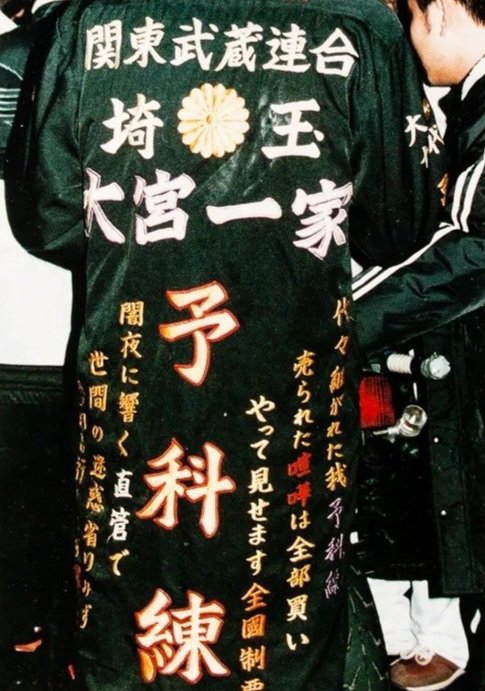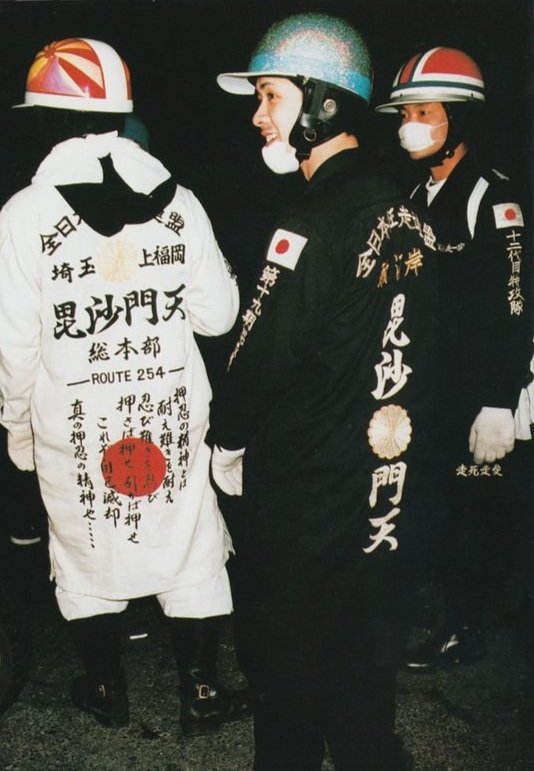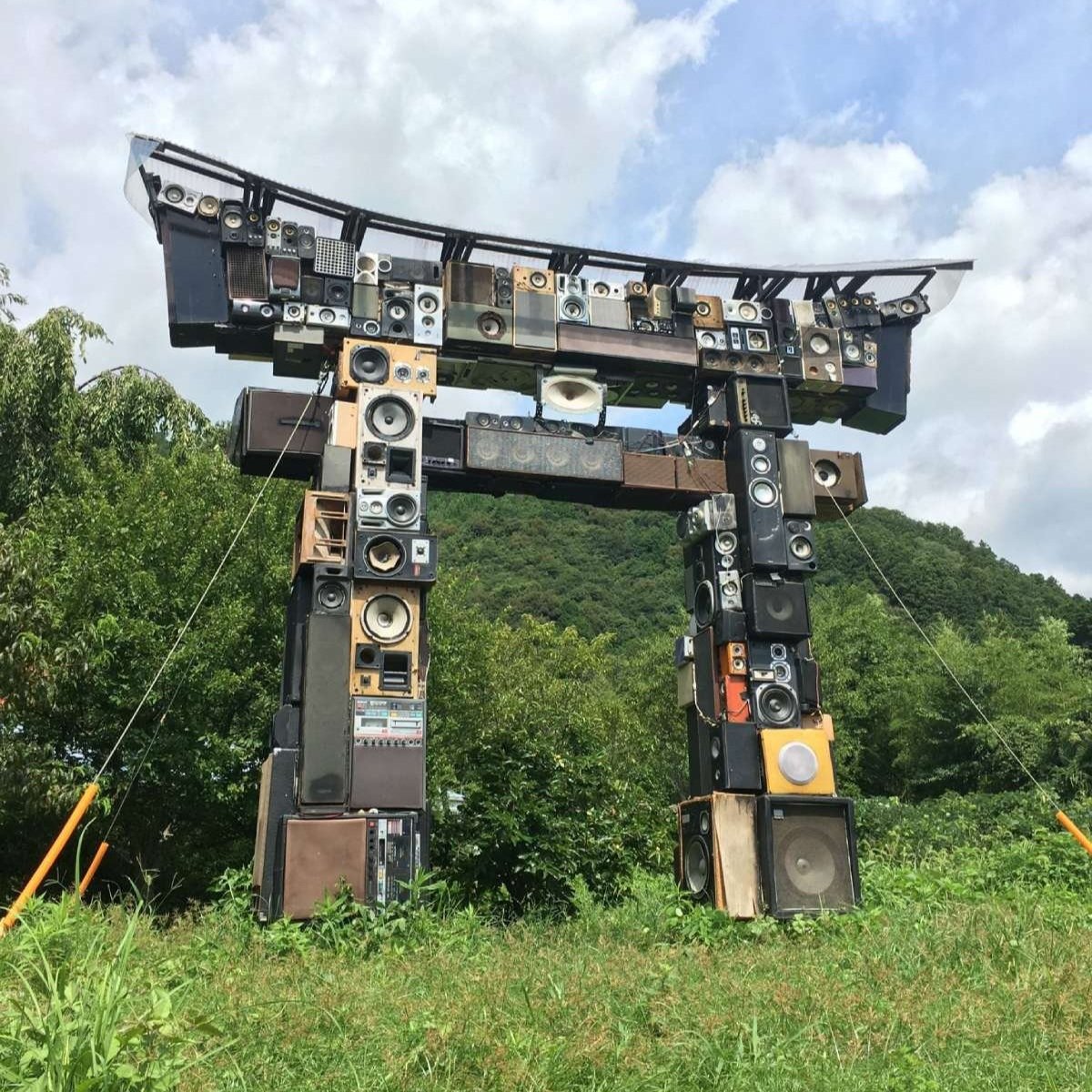Bōsōzoku Fashion - Inside the Iconic Style of Japan’s Biker Gangs
From the book ‘Bosozoku’│via Village Books│© Masayuki Yoshinaga
One of the world’s most extravagant motorcycle subcultures emerged from the shadows of Japan’s neon-soaked metropolises and pristine streets. The Bosozoku (暴走族), or speed tribes, were gangs of fashionable young members riding extremely customized motorcycles. Their style was a mix of military influences, rockabilly, and punk, all of which became their visual manifesto. Why was their fashion style so iconic, and what does Bosozoku fashion look like today? We’re unpacking the Bosozoku look and all its facets.
In this article
The origins of Bosozoku Fashion
The Tokko-Fuku - A Bosozoku Manifesto
Regional Variations
Accessories and Hairstyles
The Bosozoku Downfall
An Inspiration for Fashion Designers
Modern Interpretations
Bosozoku as a Cultural Cipher
The Origins of Bōsōzoku Fashion
The roots of the Bosozoku phenomenon can be traced back to the 1950s, embedded deeply in Japan’s post-war environment. Biker groups born out of disillusionment among returning young soldiers led to the emergence of the Kaminari-zoku Thunder Tribe, the predecessor of Bosozoku. Many of these members faced bleak futures in a rapidly industrializing Japan. Their motorcycles became a symbol, a vessel of rebellion against a society driven by a conformist, corporate lifestyle.
But it wasn’t until the early 1970s that the subculture transitioned to the infamous Bosozoku spectacle we know today. Apart from the flamboyant bikes that appeared on the scene, their iconic uniforms—the tokkō-fuku— were introduced, influenced directly by Japan’s militaristic past, specifically the kamikaze pilots of WWII.
Jumpsuit worn by a member of the Chiba Killer Group│via Wikimedia Commons│© Chiba Killer Group
The Tokkō-Fuku - A Bōsōzoku Manifesto
The pride of Bosozoku members was found in their Tokko-fuku (特攻服), translating to “special attack uniform.’ These embroidered jumpsuits and trenchcoats became quintessential uniforms for gang members, who decorated their uniform with kanji slogans, rising sun patches, and gang insignias.
Often the Tokko-fuku would be worn in an open and nonchalant way so the sarashi, a traditional bandage wrap worn either around the midriff or torso, would be visible. This combo, often finished with combat boots and accessories made up the fundament of the Bosozoku look.
Yet the element that gave the Tokko-fuku its legendary status were the decorations. Each Tokko-fuku is adorned with embroidered kanji characters transforming it into a rebel manifesto. The descriptions often included:
Nationalistic Slogans
Members represented their cultural pride through phrases such as Yamato-damashii (大和魂) or Japanese spirit.
Gang Affiliations
Every member belonged to a certain tribe, often with rivalries between gangs taking place. Personalized logos, names, or mottos that established loyalty to the specific gang were a must, while also creating an intimidating visual identity.
Historical References
Due to its roots in military culture, the use of symbols like the rising sun, manji (卍), or imperialist motifs preserved the Bosozoku’s connection to Japan’s controversial past.
We’ve had a few messages asking how to get your hands on a Tokko-fuku. With Bosozoku culture being so rare these days, finding places that still make and sell these embroidered pieces can be a challenge. One option is Fashion House Aoki, which offers international shipping—but be prepared to test your translation skills for the process.


Regional Variations
While Bosozoku gangs shared their identity through their fashion, regional distinctions brought unique flavors to their uniforms and bikes. Their outfits were a means to showcase their pride, and in some cases, send a message or provocative statements aimed at rival gangs.
Eastern Japan (Kantō Region)
Known for a more militaristic and austere approach, with dark-colored uniforms and sharp, minimalist embroidery designs. Their motorcycles often featured traditional motifs such as dragons or samurai themes
Western Japan (Kansai Region)
In contrast, gangs from Kansai leaned into extravagance, favoring brighter colors like white and pink for their tokkō-fuku. Their bikes were more often customized with extravagant decorations, from extended exhaust pipes to neon lights.
Accessories and Hairstyles
Beyond the Tokko-fuku, accessories played an important role in completing the Bosozoku look.
Hachimaki Headbands
Japanese headbands that were first worn by samurai, but popularized by kamikaze pilots. The band was often inscribed with defiant slogans like tenka muteki (天下無敵), meaning “unrivaled under heaven.”
Sarashi Bandages
Traditionally, sarashi bandages were worn under a kimono or armor to resist injury. These white wraps evoked images of toughness among Bosozoku members, tapping into the imagery of wounded samurai or kamikaze pilots.
Surgical Masks
Often used to hide their identity, Bosozoku members wore surgical masks or bandanas, tapping into the air of dystopian anonymity and their aura of menace.
The Bosozoku hairstyle was equally iconic. The pompadour, a nod to 1950s American rockabilly culture, became a signature look. The absurd height and volume of the hair symbolized arrogance, and stood in contrast with the punch perm and its tightly coiled curls which gave a more dangerous edge.
Over time, women became a big part of Bosozoku culture. They often wore bold makeup, with long, brightly dyed hair that shattered the ideals of Japanese femininity, instantly becoming unmistakable figures of rebellion.
From the book ‘Bosozoku’│via In Form Library│© Masayuki Yoshinaga
The Bosozoku Downfall
Bosozoku fashion was both a statement and a deliberate provocation to society. The visible militaristic overtones gave off sharp criticism, particularly from those who viewed the rising sun image and imperial slogans as reminders of Japan’s military history during WWII.
In the early 90s, legal and societal pushback led to the steady decline of Bosozoku members. For starters, police were allowed to seize any tokko-fuku on sight. This stigma even impacted craftsmen with embroidered uniforms, with some facing accusations of enabling juvenile delinquency. Despite these measures, the craftsmanship of these garments persisted.
An Inspiration for Fashion Designers
Although the heydays of Bosozoku culture are long gone, the boldness of its fashion has not gone unnoticed. Designers like Junya Watanabe and brands like Y-3 have drawn inspiration from the intricate embroidery and rebellious spirit of the subculture.
Many of the elements of the Bosozoku aesthetic—embroidered jumpsuits, military boots, and bold typography—have soaked into global streetwear, appearing on runways and in high-fashion collections.
Neighborhood, founded by Shinsuke Takizawa, saw Japanese biker culture as a major influence to their design, reflecting the ethos of Japanese biker culture through its graphic-heavy designs.
Katie Ann McGuigan’s Autumn/Winter 2019 collection infused the spirit of Bosozoku culture, creating prints and textures reminiscent of their customized motorcycles and slogan-covered uniforms into her designs.
Meanwhile Yohji Yamamoto’s Y-3 Spring/Summer 2020 collection reworked the subculture’s rough visuals. The collection featured T-shirts with embroidered yellow and red initials on the back, a clear visual reference to the graphics and cuts that honor the fearless attitude of the iconic biker gangs.
Even beyond Japan, elements of Bosozoku style—embroidered jumpsuits, exaggerated hairstyles, and militaristic accessories—have surfaced in streetwear movements. Even when marginalized, Bosozoku culture keeps shaping the zeitgeist in unexpected ways.
Y-3 Bosozoku sweatshirt│via End Clothing
Modern Interpretations
Just like its members, Bosozoku fashion has evolved. Throughout the past three decades, the Bosozoku uniform found new purpose in unexpected places. Japanese students are sometimes seen wearing jumpsuits inspired by tokko-fuku to school events. Rather than standing as a symbol of rebellion, they become a playful nod to tradition.
The allure of Bosozoku culture reaches far beyond Japan thanks to modern fashion references and pop culture reinterpretations such as Tokyo Revengers. The anime and manga series introduced the biker culture and its fashion to a wide audience. With its embroidered tokko-fukus, fierce camaraderie, and codes of honor, Tokyo Revengers draws a direct line between its fictionalized gangs and the Bosozoku subculture.
The Bosozoku flame might be a weak one, but it’s still burning. These waves of resurgences are a reminder of fashion’s unique power to tell stories—not just of style. Whether worn on the streets of Tokyo, immortalized in manga panels, or embraced at rural festivals, the Bosozoku uniform still provokes, inspires, and disrupts in ways that few cultural artifacts can.
Bōsōzoku as a Cultural Cipher
Woven from threads of rebellion, the Bosozoku aesthetic carries deep symbolic weight, connecting to Japan’s past and a critique of its present.
Even as their numbers dwindle, the legacy of Bosozoku endures. In their flashy motorcycles and embroidered uniforms, Bosozoku leave behind an indelible mark, a reminder that subcultural style is never just about what you wear, but why you wear it.
Bosozoku fashion is a story stitched into the fabric of Japan’s postwar identity. Each embroidered kanji character, every pompadour coiffed to perfection, speaks of a generation that didn’t feel heard, and sought to challenge the norm. While its heyday may have passed, the Bosozoku spirit lives on, influencing everything from streetwear to high fashion.












Revolutionary Bikers - the rise and fall of Japan's Bosozoku subculture.